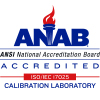Many thermocouple solutions are provided fully assembled and connected to a subminiature plug (SMP) with polarized blades, allowing the thermocouple to quickly be attached to a data logger. While these thermocouple solutions often save time and effort, it can be helpful to understand the basic principles of how a thermocouple is connected to an SMP. This can be especially useful when troubleshooting unusual temperature readings that may not be realistic for the application at hand.
The SMP typically consists of few components reminiscent of screw terminal blocks. While screw terminal blocks have easy to access screw clamps for wiring by allowing a wire to simply be stripped of its sheathing material and placed inside before screwing the clamp down onto the wire, an SMP instead shields its screw terminals from view by housing them underneath a protective cover. This protective cover is typically held down onto the SMP by two Philips (cross head) screws.
By loosening these screws on the SMP, the protective cover can be easily removed to reveal the two screw clamps used to connect the positive and negative thermocouple wires to the SMP. When viewing the wires and how they are connected to the SMP, it is important to make sure that the polarity of the thermocouple itself is correct, by verifying the correct wire is connected to its proper negative and positive terminals. The polarity of the wires are typically indicated by the color of the sheathing material on each individual wire.
In North America, thermocouple wiring most commonly follows ANSI color coding standards for thermocouple wiring, where the negative wire is typically red, while the positive wire is color coded to the specific thermocouple type. However, international (IEC) color coding typically uses white for the negative wire. When in doubt, it is best to check with the thermocouple manufacturer to ensure the polarity is correct.
The two screws are tightened to clamp onto thermocouple wiring, allowing an electrical connection between the wires of the thermocouple and the prongs of the miniplug. These should be clamped firmly, ensuring that the wires cannot be easily pulled free. However, for various reasons, it may be necessary to attach or reattach the thermocouple wiring. To loosen the clamps, these two screws can be turned counterclockwise until the wires are freed.
Once the wires are freed, its important to inspect the thermocouple wiring to make sure that enough of the insulation material is stripped away to reveal the bare metal of the thermocouple wires. However, if too much insulation is removed, the wires may touch and ‘shorten’ the signal, resulting in incorrect thermocouple readings. Conversely, if not enough wire is exposed, this could prevent the screw from clamping down onto the bare metal of the wire, and may result in clamping onto the insulation which could prevent a solid electrical connection.
It’s recommended to hook both of the wires around the left side of each of their respective screws, wrapping around the top of the screw in the clockwise direction, as the screw will need to rotate clockwise to tighten down onto the wire. Hooking over the left side will prevent the wire from pushing free as the screw is tightened.
After tightening the screw, gently pull on each lead wire to ensure that they do not free themselves from their screws, and also double check to ensure that the bare metal of each wire do not make contact with each other. If everything looks good at this point, the protective cover can then be reconnected and screwed back into place, to protect the connection of the thermocouples with the miniplug. Once fully reassembled, the thermocouple plug can then be reconnected to the data logger, to check that the resulting connection is providing appropriate readings.






